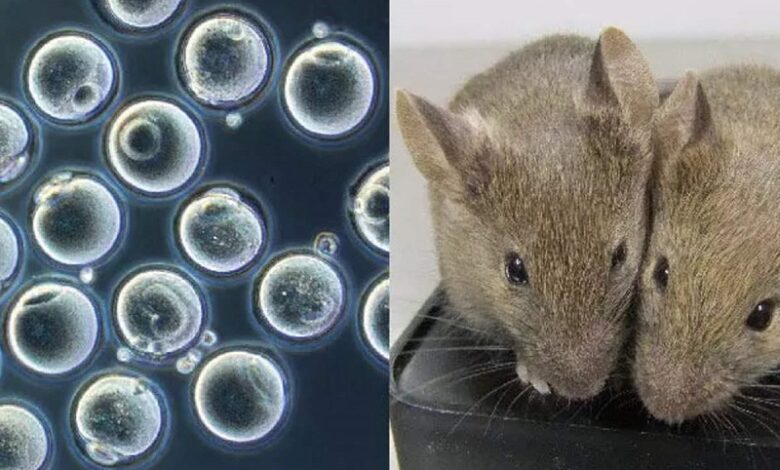Two Biological Dads Have Been Created In Mice By Scientists

They Claim That The Method Might One Day Be Applied To People
Scientists assert that they have succeeded in producing mice with two fathers, a development that one day might be duplicated in people. At the Human Genome Editing conference on March 8, Katsuhiko Hayashi from Osaka University explained how he made the success by switching the chromosomes in a male cell from XY to XX.
After creating female eggs, or oocytes, from male cells using that method, he fertilized them to produce seven mice with two biological fathers.
The finding is still in its infancy and has not yet been confirmed by a review by other scientists. However, if it is verified, it opens the door to male couples having their own biological offspring in the future.
The skin cells were used to create the male-to-female embryos.
Because cells can change into different types of cells with the proper cues, scientists have discovered that they are malleable.
The researchers reprogrammed male skin cells with X and Y chromosomes to become so-called pluripotent stem cells, which are cells that can differentiate into any other form of cell, in order to create the egg.
They then caused the cells to become egg cells with two X chromosomes by duplicating their X chromosomes and deleting the cells’ Y chromosomes.
Seven mouse offspring were produced using this method, and the researchers noted that they seemed healthy.
Others disagree with Hayashi’s prediction that it could be applied to people within a decade.
Before the technology is secure enough to be used on people, it will take some time.
Mice are very distinct from people, and even in mice, the eggs are of poor quality — according to Hayashi, only one in every hundred fertilized eggs resulted in a live birth.
Hayashi is nonetheless upbeat. He asserts that producing eggs from human male cells will be possible even in ten years purely from a technological standpoint, according to The Guardian.
In the future, he told the BBC, he would love to see technology provide fertility choices to same-sex relationships involving all genders. He added that the procedure might also make it easier for women and individuals with two X chromosomes who suffer from a hereditary disorder involving one of the X chromosomes to conceive.
He issued a warning, saying that it would need to be established beforehand as secure for use.
The work is fascinating and provocative, but George Daley, dean of Harvard Medical School and a non-participant in the study, told the BBC that he was not so confident that this technology would soon work on human cells.
Compared to mouse cells, human reproductive cells are much less well-known and much more complicated. According to Daley, there is still a long way to go before humans can access these fertility choices.
Despite the fact that this is not the first instance of a mouse having two fathers, the finding is encouraging. This was accomplished in a 2010 research, but their method necessitated many additional steps and embryo manipulation and failed to produce a viable egg. According to the Guardian, Hayashi’s strategy is much simpler.
Using the same method, Hayashi has also produced mice with two biological mothers in the past, going back to 2016. Seven years after Hayashi’s work in female mice, The Guardian reported that we still have not been able to create a viable human egg from female skin cells.
Although it might be feasible, is it moral?
It would be up to society to determine whether we would want to permit humans to use that technology to create children if technology reached that point.
A clear no-no for scientists has traditionally been the use of germline gene editing on people, which involves altering DNA in a manner that will be passed on to the children’s offspring.
He Jankui, a scientist, crossed that line in 2019 and revealed he had altered the genes of two babies. He was censured internationally and given a prison term.
However, the technology might be taken into consideration in the future if Hayashi’s study can create new opportunities for human reproduction.
News Mania Desk






